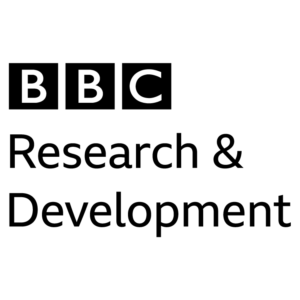Case study: BBC Standards
State of Open: The UK in 2022
Phase One “The Open Source Journey”

 Judy Parnall, Head of Standards and Industry
Judy Parnall, Head of Standards and Industry
Synopsis
BBC Research and Develoment (BBC R&D) is combating misinformation through open standards. Over three years, they led the creation of an open standard, implemented through the Coalition for Content Provenance and Authenticity (C2PA). This standard authenticates news stories, placing a symbol on websites to signal untampered content. Open Source Software ensures scalability and collaboration, involving industry giants like Adobe, Intel, and Microsoft. The C2PA standard, hosted by the Linux Foundation, is free to use, fostering widespread adoption. BBC R&D’s collaborative approach aims to enhance trust in news reporting globally, relying on a community-maintained open standard for long-term impact.
3.4 Case Study – 4 BBC Standards
Judy Parnall, Head of Standards and Industry, BBC R&D
Many world events, including the recent COVID-19 pandemic have highlighted the dangers and impact of untruthful or fake facts within online news, leading to undue stress and misinformation. Interventions to reduce vulnerabilities are critical to reduce the harmful impact on individuals and society – and one such way forward is through the use of open standards to monitor and manage news reporting.
BBC Research and Development (BBC R&D) has taken a leadership role to pave the way forward in combating these concerns through the use of Open Source Software and standards. They have inputted into standards and industry bodies across production, broadcast and other media spheres to develop strategic visions for the future of credible news reporting.
Leading the way through open standards
BBC R&D aims to influence the broadcast sector by sharing their co-created Open Source Software and open standards. They believe that the way forward is critically dependent on partnerships and collaboration. Judy perfectly sums up their mission by saying, “we’re always looking to use technology in a way that serves the BBC’s public service ethos. We’re aiming to change things to make a difference for the whole of the UK in a good way.”
Approximately three years ago, the team at BBC R&D started the conversation to create a standard to authenticate published news stories. With a history of over 100 years of reporting, they felt that they needed to take the lead and put the wheels in motion for such an important conversation. They identified multiple challenges. “As you try and improve your detection, the deep fakes get better. You’ll always be playing catch up. The question was what can we do? What can we do relatively easily that can be effective in helping people trust what they read?”
They came up with technology and an open standard which placed a symbol in the corner of websites, signalling that the piece of information had not been tampered with or edited since its origin, thereby confirming the source or originator of the content is as it appears.
They aimed to create this accreditation of source in a way that was scalable and suitable for other organisations within their sector, such as CNN or the New York Times. And this in turn resulted in the collaborative creation of the Coalition for Content Provenance and Authenticity (C2PA).
A collaborative approach
C2PA addresses the provenance of information online through the development of technical standards for certifying the source of content and it is a Joint Development Foundation project, formed by an alliance between BBC R&D, Adobe, Arm, Intel, Microsoft and Truepic. It currently has 38 members.
The standard is open and free to use, which was of great importance to BBC R&D, as “the only way you’re going to make this work is if you make the barrier for uptake as low as possible, whilst making sure it is a staple standard. So, we went for a standard under the Linux Foundation that is free at the point of use, and that anybody can join, putting their IPR into the standard, signing that they will not charge for the use of that IPR. It’s an open standard! And yes, you can build tools around it, you can build services around it if you’d like to.”
Because they’ve set up the framework through Linux Foundation, they have been able to use their experience of collaborative working amongst competitors to work at speed and avoid delays. As Judy points out they avoided reinventing the wheel – “if you spend ages with the lawyers, it just takes longer, and you lose the impetus to try and get this going. If it takes you a year as it can quite easily happen – to get your foundation or your standards body sorted. If the legals are the priority in set up, then de facto it has taken over and then the problems get worse. A bit of pragmatism is needed.”
The Development Team
The team developed the standard relying on previous work completed by Adobe and in collaboration with other entities such as tech providers, leading journalist rights organisations and other news organisations. With an active team of eight, BBC R&D set up the requirements to allow it to work in practice, a user experience group, and conducted trials to understand what it means to be a user of the potential standard both as a content creator and a content user.
They worked on GitHub as key desired outcomes were collaborative development and results at speed, “we use a very collaborative approach to software, sharing on GitHub for the purpose of collaborative development. The only way you can get something like that turned around so quickly is through open source software and open standards. It was literally six months from launch of the group to the first draft of the standard being released for comment.”
The standard aimed to use existing elements as much as possible and only inventi wheels that needed to be invented. Rather than trying to do everything at once, “…we constrained what we were trying to achieve to actually get the full impact. We aimed to understand how we could sign content, either having the signature carried along with the content, or accessed separately, so that, if the metadata gets stripped out, you can still find out where that content came from. We’ve got to appropriate implementation options and that enabled us to move very quickly.”
Why Open Source Software?
To truly impact the sector, the BBC team identified that they needed to co-create and collaborate with other leaders, in effect their competitors, to all the project to have wider impact. “The benefit of working in the open source world is you’re immediately lowering your barriers to entry. You’ve got a lot more people coming in and getting involved. These are people with skills who are doing this with a passion. These are the people who push things forward.”
She goes on to explain that because it was built on collaborative platforms, they had people from all over the globe working on it from different time zones, and effectively they had someone working on it 24 hours a day, allowing for quick turnarounds and focused work.
The path forward
BBC R&D hope that the open standard will be widely adopted within not only their sector but other adjacent sectors that can use the technology in innovative ways for the good of the public.
When asked about the maintenance of the standard, Judy explains that maintenance will be taken on over time by those who utilise, need and benefit from it the most.
As she says, “you would normally find two to three organisations taking the lead in doing that and it will probably depend on who actually uses it to generate some revenue. I think generally, when you have an open standard or a piece of Open Source Software, the people who will maintain it in the long run, are the people who have got an interest in doing so.”
